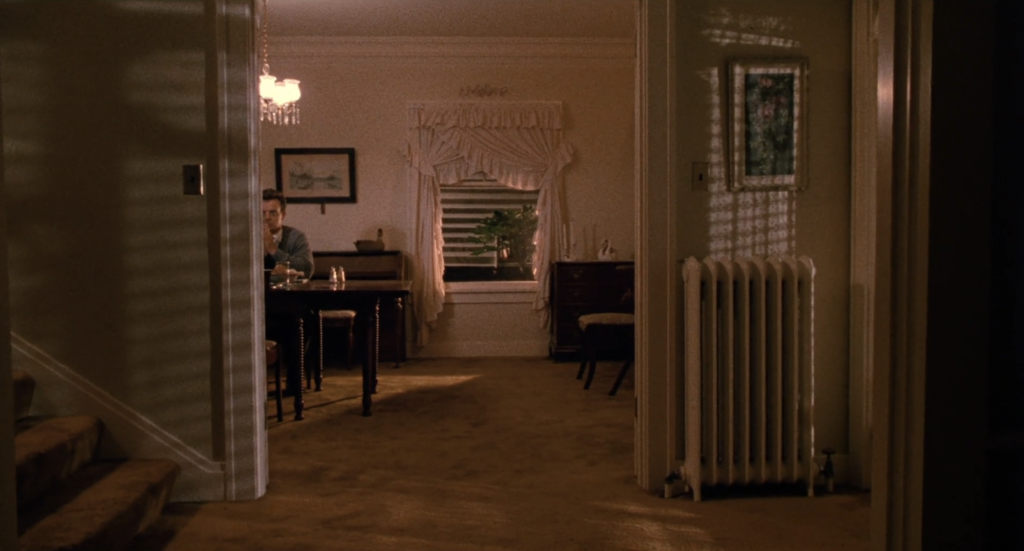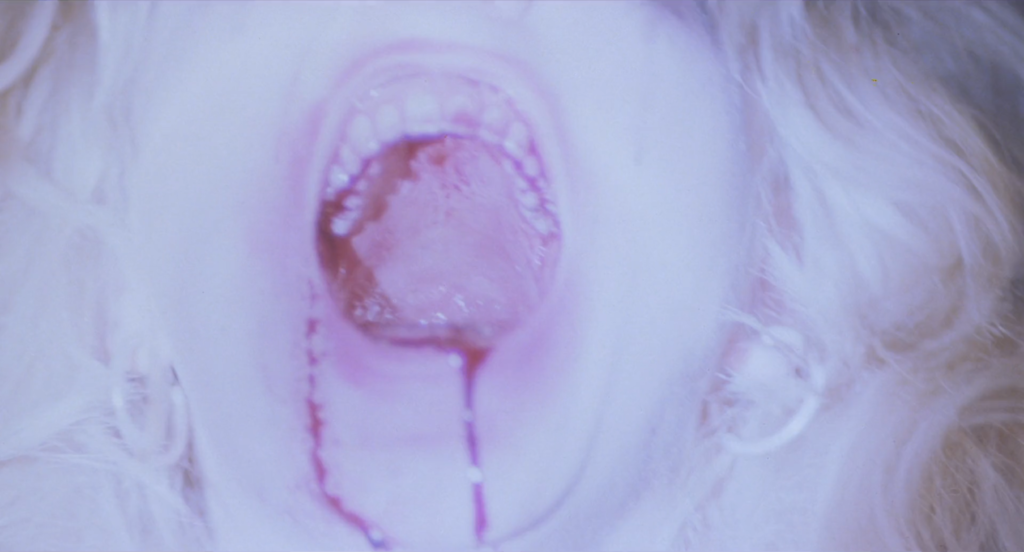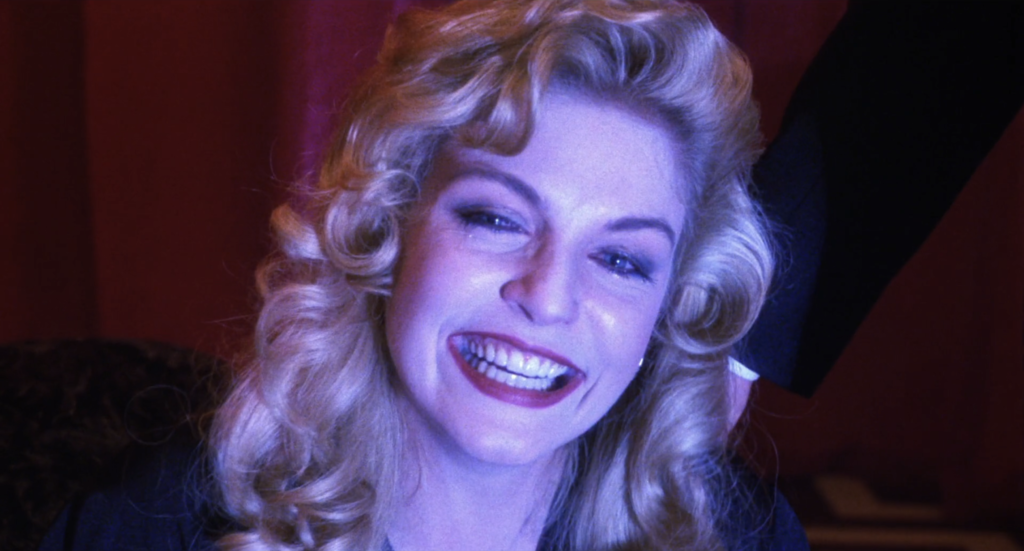
Laura Palmer (Sheryl Lee) has just come to an unsettling realization, one she does not want to accept as truth: her father (Ray Wise) may be the real person behind Bob (Frank Silva), a mysterious figure who has been haunting and sexually abusing her. While the origin of Bob remains unclear to the audience at this point, David Lynch’s use of cinematography in the scene after this realization suggests that Laura is correct in her belief. In Figure 1, Leland Palmer sits at his dining room table in solitude. The scene is lit naturalistically, with lamps used for practical lighting and shadows that emulate window blinds. The production design implies an unassuming, if stuffy, suburban home. Nothing about the mise-en-scène hints that anything sinister is about to occur. Yet Lynch’s choice to have Leland gradually appear from behind the wall as the camera trucks to the right and pans to the left in a single slow movement gives this shot an ominous, anticipatory undertone. What could have been a simple establishing shot becomes a reveal fit for a horror film, and Leland’s stern gaze into the camera, though tiny in this long shot, adds to his foreboding quality.

Though Leland Palmer’s abuse of his daughter Laura seems at first to be limited to the domestic sphere, the spirit of Bob eventually leads him to take her to an abandoned train car and kill her. Figure 2 appears in a montage at the climax of the film, as Leland pulls out a knife and begins to stab Laura. An unnatural, cool-toned light with no apparent diegetic source flashes over Laura’s face, washing out almost all detail except for her mouth and the blood trickling out of it. Laura’s head tilts back as she screams, placing her wide-open mouth on a higher plane than her earrings. The shot is framed in an extreme close-up, cropping out Laura’s neck and nose to ensure her mouth is the sole focal point visible for the brief moment this image appears on screen. The artistic choices made in this shot reference the style of Francis Bacon, whose paintings David Lynch has described as influential to his own art process (Powell 312). Specifically, the grayish-blue lighting of Laura’s skin, the close cropping to reveal only her mouth and ears, and the upward tilt of her face that makes her upper teeth prominent, all strongly recall the face of the rightmost figure in Bacon’s Three Studies for Figures at the Base of a Crucifixion (1944). In Bacon’s work, the featureless figures react to a crucifixion; here, Laura Palmer embodies anguish as she reacts to her imminent death at the hands of the man who made her life unbearable.

Bathed in a flickering blue spotlight that calls back to the cold lighting of her murder scene, Laura Palmer appears in the “red room” dimension of Twin Peaks after her death (Figure 3). This time, however, the unnatural quality of the light is not used to heighten a sense of terror. In the reverse of this shot, Laura’s point of view contains an angel (Lorna MacMillan), which had previously disappeared from a painting in her bedroom. The light on Laura’s face emanates from this floating angel figure, and her reaction to it implies a spiritual or healing effect of the light. As Laura gazes at the angel, her expressions shift from open-mouthed awe to smiling, nodding, laughing, and finally crying tears of joy as she seems to come to a place of acceptance and relief in this otherworldly space. In these final moments, Sheryl Lee’s uninhibited performance quality gives Laura Palmer’s conclusion a powerful authenticity.
Twin Peaks: Fire Walk with Me (Spine #898) is available from The Criterion Collection.
References
Bacon, Francis. Three Studies for Figures at the Base of a Crucifixion. 1944, Tate Modern, Britain.
Powell, Jeremy. “David Lynch, Francis Bacon, Gilles Deleuze: The Cinematic Diagram and the Hall of Time.” Discourse, vol. 36, no. 3, 2014, pp. 309–339, https://doi.org/10.13110/discourse.36.3.0309.
Author Biography
Ruby Schweitzer is a North Carolina-based filmmaker and scholar majoring in Film Studies at the University of North Carolina Wilmington. She has a passion for avant-garde cinema, feminist film practices, and cinematography.



































